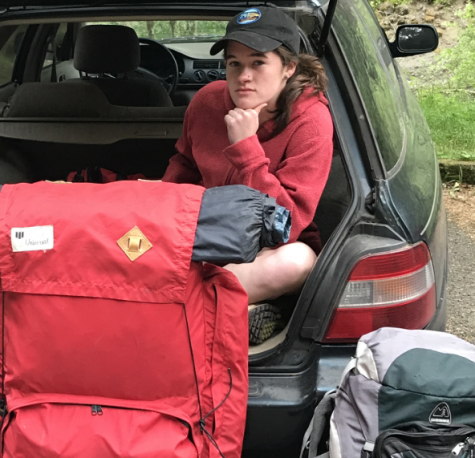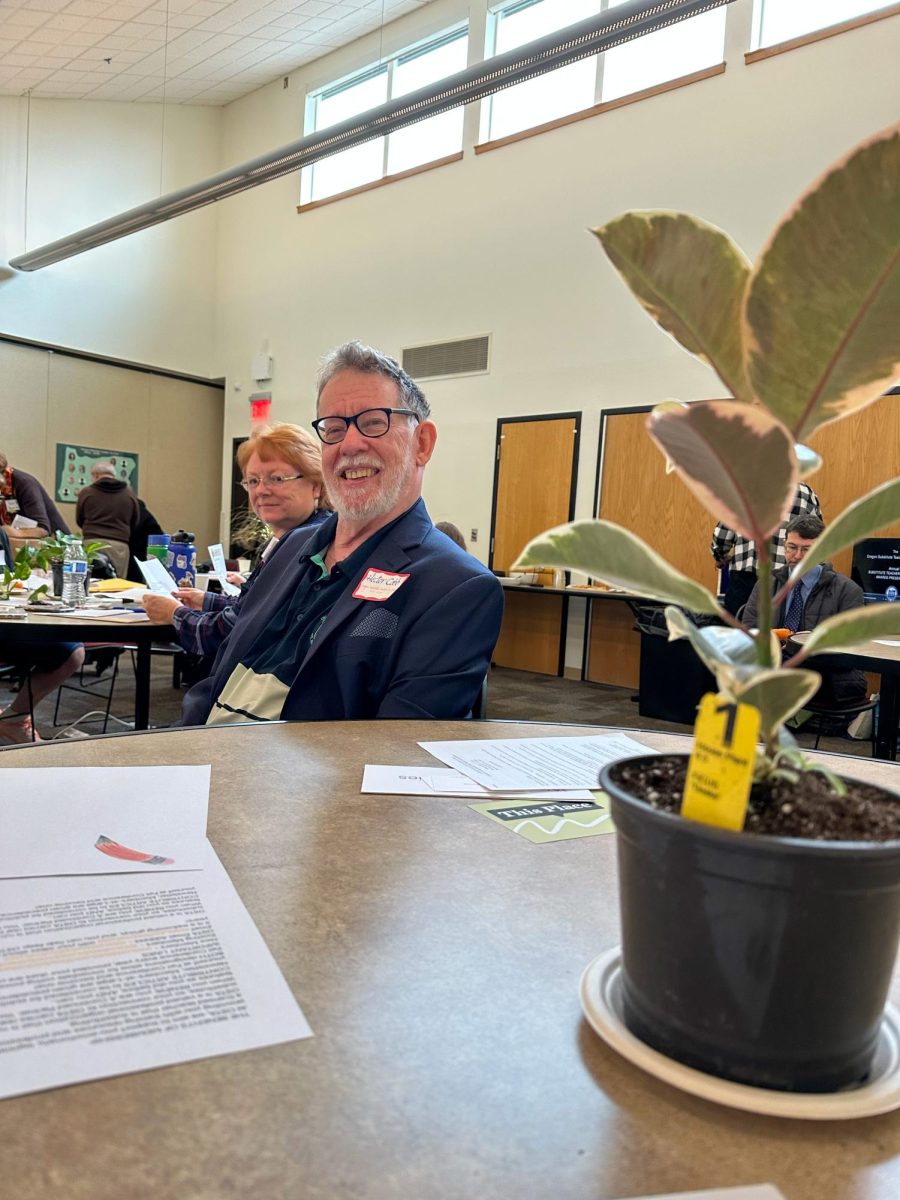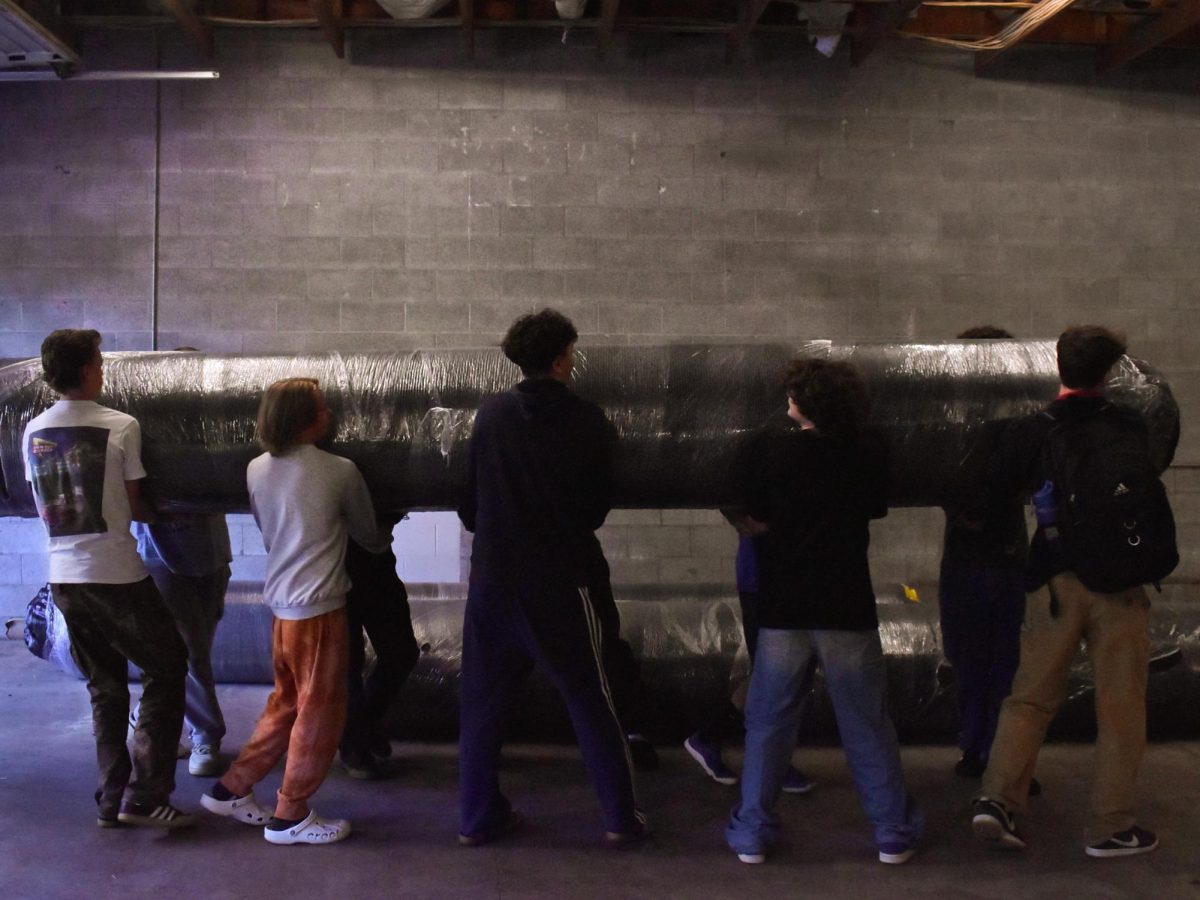Columbia River Gorge Update
It has been a year since the 2017 Eagle Creek Fire, how has the forest responded?
October 31, 2018
“Fire isn’t new to the forest,” said Maegan Jossy, the Outreach Manager for Friends of the Columbia River Gorge. Since the 2017 Eagle Creek Fire, the forest shows signs of recovery and holds many open trails in the near future.
One of the first native plants to return to the gorge was trillium and fireweed. Jossy talked about how bare the forest looked until the appearance of the “bright white trilliums.” Native bleeding hearts and most of the ferns have returned as well. Some of the trees look healthy because the bark was burned, but the fire didn’t cut to the core of the tree. Some of the first trees to grow will be alder, douglas-fir and maple because they all grow well in open space.
Due to the burn, the ground has become vulnerable to invasive species. “Invasive species essentially make the ground poisonous around them so nothing else can grow and take over burned areas. Some of these plants include Herb Robert (“stinky” Bob) and blackberries. To prevent this, Friends of the Columbia River Gorge has led efforts to remove these plants and spray occasionally.
One of the challenges in the recovery of the trail systems is rock slides. Moss was burned during the fire and moss serves as the glue to hold rock formations and plants together. The slides have swept out pieces of trail in places like Eagle Creek, and left no land for the trail to go on. Also, bridges have been burned down, which aren’t simple to replace. There are protected species in the gorge and a habitat schedule that needs to be worked around to rebuild these bridges. Due to these obstacles, it is hard to estimate when the entire gorge will be open.
“Keep an eye on trail closures before going out,” said Alex Fuller, Cleveland’s environmental systems and societies teacher.
Outside of there not being a trail, it can be dangerous to go out on closed places due to dead trees falling and rock slides from rotting roots.
“Since the Eagle Creek Fire, Friends [of the Columbia River Gorge] has been working with the community leaders to engage state and federal agencies in new approaches to managing the gorge’s 100-year-old trail system. This includes exploring challenges with existing transportation systems, such as the traffic congestion along the Historic Columbia River Highway. We’re working to build new systems that disperse hikers, encourage transit use and bring additional dollars to local communities,” wrote Friends in their news article called ‘Living with Fire.’ The plan is to open the Historic Highway at the end of 2018 and also open trails West of Multnomah Falls, including Angel’s Rest.
“I miss all the memories that I made there and I was worried that I wasn’t going to be able to make more, but now that I know it’s coming back I’m excited to go back there,” said Cleveland junior Emily Crago.
Also, the fire was a mosaic burn pattern meaning the fire was patchy. In some areas the canoopy is alive and only the understory is burned. In other areas there is more complete disturbance so it will be a while before it fully recovers.
While time heals the forest, people can help by volunteering to do trail work or donate to nonprofits like the Pacific Crest Trail Association, Washington Trail Association, Trail Keepers of Oregon and Friends of the Columbia River Gorge. People should also use boot brushes when going hiking to prevent the spread of invasive species. Fuller said that the gorge is a popular area and open trails are getting over populated that can hurt new growth, so see it, but go other places and see more of Oregon.













